Xenomorph
Harmless

Posts: 17
Registered: 23-4-2011
Member Is Offline
Mood: No Mood
|
|
Makeing Sodium cobaltinitrite
I am trying to make some Sodium cobaltinitrite for testing for potassium. I am using NaNO2 and CoCl3*6H2O as a starting material. By mixing
stoichiometric amounts of them in water I got deep orange-red viscous solution (Na3Co(NO2)6 and NaCl, I guess). I tried to crystalize Na3Co(NO2)6 by
cooling the solution on ice - with no success. When I tryed to precipitate with alcohol, I only got dark droplets of liquis, not crystals. What are
recomentations for extraction of Na3Co(NO2)6 ?
|
|
|
LanthanumK
Hazard to Others
  
Posts: 298
Registered: 20-5-2011
Location: New Jersey
Member Is Offline
Mood: No Mood
|
|
CoCl3*6H2O?
|
|
|
ScienceSquirrel
International Hazard
    
Posts: 1863
Registered: 18-6-2008
Location: Brittany
Member Is Offline
Mood: Dogs are pets but cats are little furry humans with four feet and self determination! 
|
|
Sodium cobaltinitrite solution
Dissolve 17gms. of the pure salt in 250
of water.
Alternately, the solution may be prepared as follows: Dissolve 7.5 gms. cobalt nitrate in 30ml. of water; dissolve 60gms. of sodium nitrite in 30ml.
of water, mix the two solutions with vigorous stirring and add 15ml. of glacial acetic acid, stir, dilute to 250ml, allow to stand and filter.Make up
new solution every 2-3 weeks.
|
|
|
blogfast25
International Hazard
    
Posts: 10562
Registered: 3-2-2008
Location: Neverland
Member Is Offline
Mood: No Mood
|
|
I don't recall it being unstable?
|
|
|
ScienceSquirrel
International Hazard
    
Posts: 1863
Registered: 18-6-2008
Location: Brittany
Member Is Offline
Mood: Dogs are pets but cats are little furry humans with four feet and self determination! 
|
|
It might just be a precaution or it may go off in aqueous solution.
I took it from an analytical manual.
|
|
|
Xenomorph
Harmless

Posts: 17
Registered: 23-4-2011
Member Is Offline
Mood: No Mood
|
|
Thanks!
Can I replace Co(NO3)2 with CoCl2? I know, Cl- salts is not recomended in coordination chemistry, because they can interfere, however, NO2- is much
"stronger" ligand, am I right?
Is there any simple way to isolate crystalic sodium cobaltinitrite? And what isthe role of acetic acid, just pH buffering?
|
|
|
ScienceSquirrel
International Hazard
    
Posts: 1863
Registered: 18-6-2008
Location: Brittany
Member Is Offline
Mood: Dogs are pets but cats are little furry humans with four feet and self determination! 
|
|
I think the solution is more stable if it is made slightly acidic.
Why not make up a solution and test it?
A solution seems fit for your purpose so why isolate the salt?
|
|
|
DJF90
International Hazard
    
Posts: 2266
Registered: 15-12-2007
Location: At the bench
Member Is Offline
Mood: No Mood
|
|
Check the forum library for Brauer's book. It ought to be in there I suspect.
|
|
|
Xenomorph
Harmless

Posts: 17
Registered: 23-4-2011
Member Is Offline
Mood: No Mood
|
|
Yes, it works. I made cobaltinitrite solution, using cobalt chloride and upon addition of KCl, i got yelloy potassium cobaltinitrite precipitate which
looks similar to PbI2.
I am mineral colector and I am now trying to make my system for simple chemical identification of minerals (qualitative tests for each action an
anion). As there are many test reagents which I do not use often, I prefer solids because they ussualy are more stable upon storage.
|
|
|
ScienceSquirrel
International Hazard
    
Posts: 1863
Registered: 18-6-2008
Location: Brittany
Member Is Offline
Mood: Dogs are pets but cats are little furry humans with four feet and self determination! 
|
|
I suspect that if you made up say 25ml and then kept it in a sealed bottle in the fridge at say 10C it would last for months.
Dark and cold and an absence of oxygen have a strong stabilising effect on chemicals 
|
|
|
The WiZard is In
International Hazard
    
Posts: 1617
Registered: 3-4-2010
Member Is Offline
Mood: No Mood
|
|
Interesting. I was aware of the use of cobalt nitrate in
the chemical analysis of minerals, however, not for the
detection of potassium. I shelve —
Orsino C Smith
Identification and Qualitative Chemical Analysis of Minerals
D Van Nostrand 2nd. ed. 1953
Yea old Feigl's - Spot Tests makes passing mention.
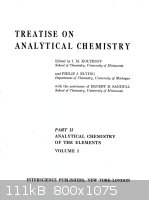 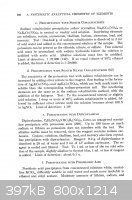
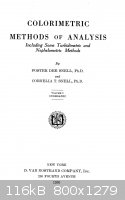 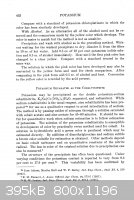
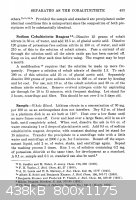
djh
----
God deserves a cosmological explanation
New Scientist 01 June 2011
COSMOLOGISTS have always had an uneasy relationship with
God. After all, cosmology provides grist to the mill for those
looking for signs of a creator: what better evidence than a
moment of creation such as the big bang? Another trophy, for
scientifically sophisticated deists, is the fact that we see the
universe as a single observable thing rather than a fuzzy
superposition of many states simultaneously.
The laws of quantum mechanics must apply to the universe as a
whole, just as they do to electrons. But this suggests that the
way to collapse the universe's superposition of states is for
something on the outside to observe it. Ask cosmologists who
or what plays this observer role and they'll shuffle their feet.
In "When the multiverse and many-worlds collide", we report
that cosmologists claim to have found a way to rid themselves
of the need for a God-like observer. Along the way, they may
have unified two of the most bizarre ideas dreamed up by
scientists - the many worlds interpretation of quantum
mechanics and the multiverse.
That will be a relief. Cosmologists can now begin to take God
seriously, precisely because they can explain him (or her) away.
|
|
|
entropy51
Gone, but not forgotten
    
Posts: 1612
Registered: 30-5-2009
Member Is Offline
Mood: Fissile
|
|
Cobaltinitrite was used by hospital labs in olden times to measure the amount of potassium in blood.
The solution is not stable. It can be stabilized by the addition of a few drops of methanol per liter of solution. Reference in J Chem Ed.
|
|
|
Xenomorph
Harmless

Posts: 17
Registered: 23-4-2011
Member Is Offline
Mood: No Mood
|
|
I also have not heard about cobaltnitrite use in chemical testing of minerals. I have book "Mineral identification" by Donald B. Peck and there are
chemical tests for most of anions and cations, however, for testing of some ions, like K+, there are not much information (for K+ only flame test) so
I am searching for some other tests or reactions which I can adopt for using in mineral testing (for example, test for boron with extract of Curcuma
longa) because I am a student and I can not afford to spend many $ to send my samples to XRD/ EDS analyses and also I found more interesting to
perform tests by myself as I can learn much in this process. I also have red picric acid can be used in tests for potassium...
By the way, it seems I finally succeeded in isolating small amount of solid sodium cobaltnitrite.
p.s.
The WiZard is In : do you have that first book in pdf?
(And sorry for my english)
[Edited on 8-6-2011 by Xenomorph]
|
|
|
The WiZard is In
International Hazard
    
Posts: 1617
Registered: 3-4-2010
Member Is Offline
Mood: No Mood
|
|
Et tu!
Orsino Smith sez. potassium yields a pale violet flame
when viewed through a Merwin Screen. Procedure 23,
however, first you have to do Procedure 22, which requires either
P-19, P-21 or P-14. P-19 requires P-14.... Which is why I not
going to scan this book.
In the US of A you can buy used copies of the 2nd ed. for US $10 -$12.00.
When your rich and famous you can buy a four-axis stage for
your microscope (there was on for sale on eBay many years
ago!) and a copy of —
Optische Bestimmung der gesteinsbildenden Minerale -
Tröger, W., Hans U. Bambauer und Franz Taborszky
Teil 1: Bestimmungstabellen
Teil 2: Textband
Or same such.
Don't worry about the German - just look at the pictures/tables.
Try this —
Simple Tests Potash
Mining and scientific press, Volume 113
1913
http://tinyurl.com/6c7k5sg
Run Merwin Screen though Google.com/books. You can
use the Advanced Search to select a language.
|
|
|
The WiZard is In
International Hazard
    
Posts: 1617
Registered: 3-4-2010
Member Is Offline
Mood: No Mood
|
|
Nice snaps of 4-axis stage.
http://www.photomacrography.net/forum/viewtopic.php?t=6088
Here dobe the Zeiss manual PDF —
http://tinyurl.com/3cx4u94
|
|
|